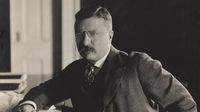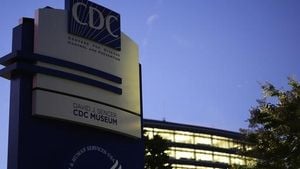On Labor Day, September 1, 2025, the streets of Chicago’s West Loop pulsed with the energy of thousands of demonstrators, union members, and activists. Their rallying cry was clear: workers must take precedence over billionaires, especially as the city faced the looming possibility of federal troop deployment ordered by President Donald Trump’s administration. The “Workers Over Billionaires” march, organized by local unions and labor advocates, became a focal point for a city steeped in labor history and now thrust into the national spotlight.
The tension had been building for days. Reports emerged that the Trump administration was preparing to send thousands of National Guard troops to Chicago—a move that sparked both outrage and fear among local leaders and residents. According to Block Club Chicago, the administration also announced plans to dispatch a “large contingent” of immigration agents, including a tactical “strike team,” raising further concerns about the rights and safety of Chicagoans, especially immigrants and workers.
Mayor Brandon Johnson, seeking to reassure the city, acted swiftly. On August 30, Johnson signed an executive order aimed at protecting the constitutional rights of Chicago residents ahead of any federal intervention. Standing atop a float at the Haymarket memorial—the symbolic heart of the American labor movement—he addressed the massive crowd with resolve. “We’re gonna defend our democracy in the city of Chicago,” Johnson declared. “We’re going to protect the humanity of every single person in the city of Chicago, and we got the baddest freaking labor movement in the city of Chicago. We’re going to take this fight across America, but we defend the home front first.”
Labor Day, a federal holiday born from the struggle for workers’ rights, carries particular weight in Chicago. The city’s Haymarket Affair of May 4, 1886, saw a peaceful rally for an eight-hour workday erupt into violence, leaving at least 11 dead and 70 wounded. That historic clash became a touchstone for labor movements worldwide, and speakers at Monday’s rallies didn’t let the crowd forget it. “From the Haymarket to the stockyards to Pullman, we know our history as a labor movement, and we know when to fight and when we fight, we win!” said Bob Reiter, president of the Chicago Federation of Labor, as reported by Block Club Chicago.
The “Workers Over Billionaires” march wound through the city with four major stops, each chosen for its symbolic significance in the ongoing struggle between labor and capital. The first rally gathered at the Haymarket memorial, where demonstrators donned anti-Trump garb and carried signs denouncing the administration’s ties to wealthy elites. One protester, Katav, arrived in a fursuit and held a sign reading, “Furries Against Fascism!” Katav told Block Club Chicago, “I think it’s important to have a broad coalition of people out here, so we have Black, white, Asian, Latino. I think we need people of all different types. So if you like Marvel movies, if you like DC movies, then come out and join the protest.”
Unity was a recurring theme. Another protester, Gordon, emphasized, “Unity is so important right now. That’s what labor organizing is about, bringing people together. We need to pay people fair wages and treat them with dignity.” The event drew major unions, including the Service Employees International Union, United Auto Workers, and the Chicago Teachers Union. Their presence underscored the scale and seriousness of the protest.
The march continued to the offices of Valor Equity Partners, where billionaire CEO Antonio Gracias became the target of sharp criticism. Gracias, who managed $17.5 billion in assets and had volunteered at the Department of Government Efficiency, was singled out for leading Trump’s immigration task force while his firm invested in industries heavily reliant on immigrant labor. Saqib Bhatti, representing Bargaining for the Common Good, told the crowd, “How did he repay his immigrant workers? By heading the DOGE immigration Task Force – leading Trump’s attacks on immigrants.” Gracias left government in July after facing intense backlash from labor organizers.
The third stop focused on Target, which had reportedly withdrawn from diversity, equity, and inclusion initiatives following Trump’s return to office. The final rally near a Tesla dealership took aim at Elon Musk, former head of the Department of Government Efficiency and a figure often criticized by labor advocates for his approach to unions and worker rights.
Despite the charged atmosphere, the protest remained largely peaceful, though not without moments of tension. According to the Sun-Times, two protest leaders were detained after staging a dining table protest on Wacker Drive to highlight the plight of restaurant workers. There were also counter-protesters, including some left-wing activists who criticized Mayor Johnson’s administration for the January 3 police shooting of Timothy Glaze, an incident that remains controversial and was captured on police bodycam footage, as reported by WTTW.
But while the streets of Chicago echoed with chants for worker solidarity, a different perspective was making waves in the national media. In an opinion piece published on September 1, 2025, critics argued that union bosses were using Labor Day to push for more government-granted coercive powers rather than truly representing rank-and-file workers. The article, as aired on Fox News Live and published by Fox News, contended that in 24 states without right-to-work laws, unions could compel workers to pay dues even if they didn’t want union representation.
The piece sharply criticized the Protecting the Right to Work Act (PRO Act), a major legislative priority for organized labor. If passed, the PRO Act would repeal all 26 state right-to-work laws by federal mandate and codify union organizing tactics such as “card check” and blocking decertification votes. The article argued these measures strip workers of choice and allow union officials to maintain power through coercion rather than voluntary support. It cited the 1924 words of Samuel Gompers, founder of the American Federation of Labor: “I want to urge devotion to the fundamentals of human liberty — the principles of voluntarism. No lasting gain has ever come from compulsion.”
According to Fox News’ analysis, “8 in 10 Americans oppose forced union dues and affiliation,” a statistic used to bolster the argument for worker choice and voluntary unionism. The article concluded by urging Americans to remember that “truly being ‘pro-worker’ means rejecting the propaganda from union bosses and respecting a worker’s right to choose whether they want to join a union.”
As Chicago’s Labor Day marchers invoked the city’s storied past and their determination to shape its future, the national debate over union power, worker rights, and the role of government in labor relations raged on. The events in Chicago served as a vivid reminder that the struggle for workers’ rights remains as urgent and contested as ever, with both sides claiming to speak for the true interests of American labor.
In the end, Labor Day 2025 in Chicago was not just a celebration—it was a battleground of ideas, history, and the enduring fight for dignity at work.





